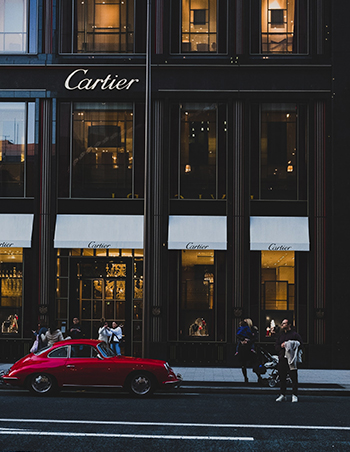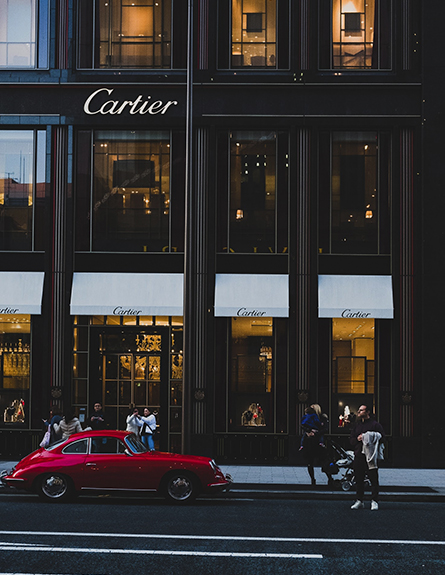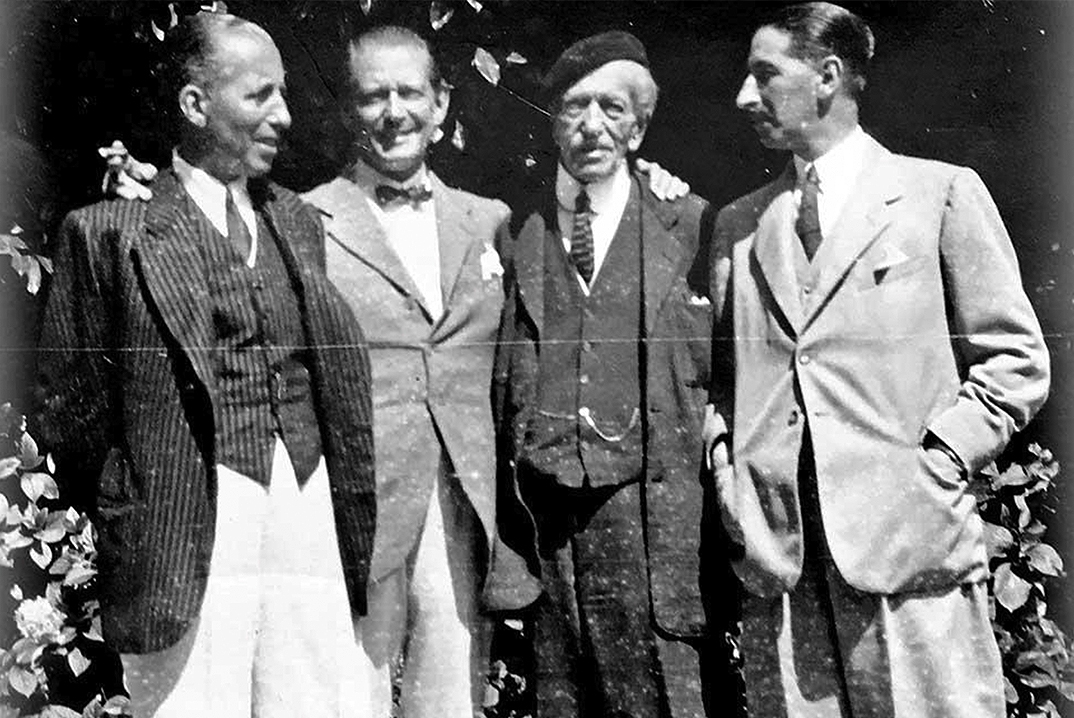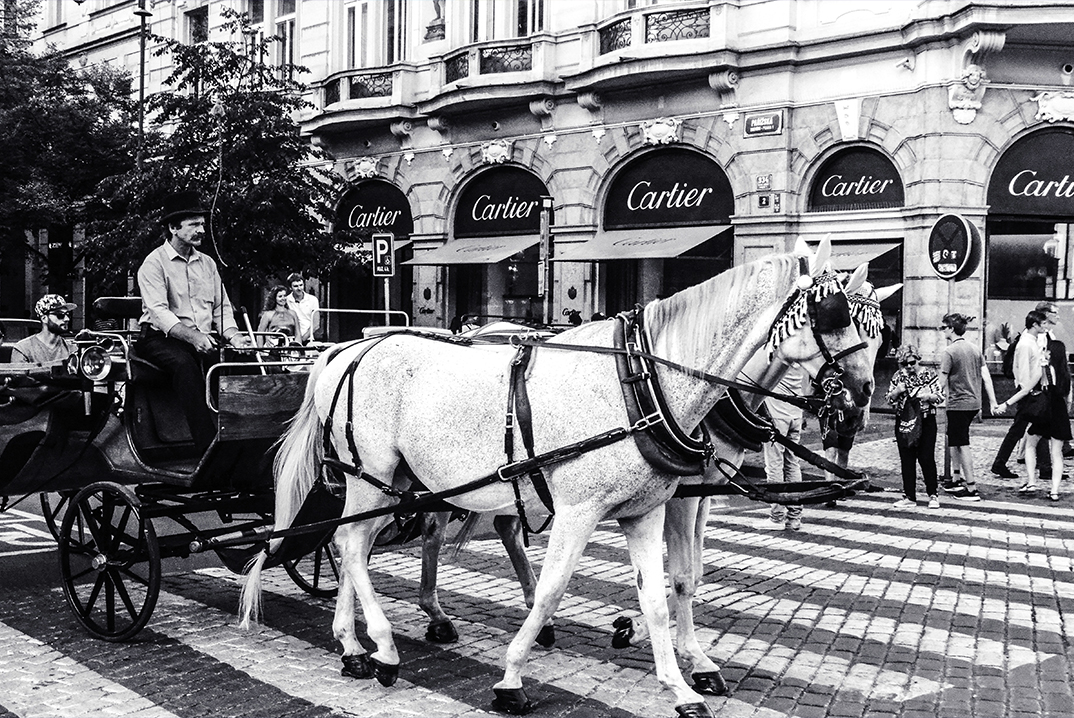
Timeless Jewelry Essentials: Cartier Edition
Date: 02/24/2023
Want to know why I’ll always rave over Cartier jewelry? Read on to find out what makes the design house such a timeless addition to any artistic or fashion-forward collection.
From the family-based nature of Cartier’s origins to the wide-spread popularity they’ve gained since the mid-nineteenth century among celebrities, there’s a whole story to the design house that I think needs to be told…
…and I think it needs to be told in full appreciation of Cartier’s accomplishments since they presented their very first products way back in 1847!
That’s why today I’m putting a bit of a spotlight onto Cartier’s history, style, jewelry and prestige in the fashion industry. Their story is truly an interesting one, and I feel excited to share it with you so that you, too, can wear your Cartier items with a new-found pride.
Plus, it makes really fun dinner conversation with new and old friends of any circle!
What is Cartier?
Cartier is a French luxury goods brand known for the design and manufacture of high-end watches and jewelry. It is regarded as one of the most ‘esteemed jewelry designers in the world today’, although they are more known for their watch-craft than their jewelry designs, which include the Cartier LOVE bracelets and iconic Panthère collection. Today, they have three “historical maisons” based in Paris, London, and New York, and have served as the crown jeweler to 19 royal houses across the globe.
Cartier: From 1847 to 2023
Although we already know Cartier as a celebrated luxury design house for watches and jewelry, its humble beginnings are quite the opposite. In fact, while the first store was opened in 1859, it remained a completely family-owned establishment for over 100 years, up until 1964!
As the story goes, Cartier was founded during the French Revolution by a Parisian watchmaker by the name of Louis-François Cartier–a beloved man who lived until 1904, and whose popularity was substantial in Paris when he died. In his passing, Louis-Francois also passed on the name of his design house to his son Alfred Cartier, who then left it to his own three like-minded sons who grew Cartier into the global brand we know it as today. Their names were Pierre, Jacques, and Louis Cartier.

Pierre, Louis, Alfred, and Jacques Cartier
According to those in the know, each grandson had a deeply individual personality that caused them to establish three separate (and still-standing) stores in Paris, London, and New York.
For example, Jacques was said to be sociable, and responsible for nourishing key client relationships around the world. He was also a great traveler who would search the globe for gemstones and pearls to be set in the then-popular Art Deco style–which eventually led to the inspiration of Cartier’s iconic ‘tutti-frutti’ accessories, still in production today.
Louis was also said to be the ‘creative heart’ of Cartier, and embraced all art forms from varying cultures…and was among the first to use platinum in jewelry, which at the time was unheard of! In fact, it was he who appointed Jeanne Toussaint as Cartier’s creative director, who spurred the development of the Cartier Panther that has become completely world-renowned.
Pierre also had a big-city impact on the design brand from his vantage point in New York, where he connected the brand with big names in America. Known for his ability to sell almost any jewel that came into his possession – no matter how big – he holds the record for selling the ‘cursed’ Hope Diamond to a ‘Mrs. Maclean’ by letting her borrow it for the weekend.
This is a diamond that sold for the equivalent of 3.8M today…can you imagine that?
Did you know? Pierre Cartier’s store on Fifth Avenue in NYC was bought with a million-dollar double strand natural pearl necklace!
Even with expansion and globalization ongoing, the Cartier brand released dozens of iconic designs during this period and today sits at a value of 15 billion US dollars…and it’s no wonder with a varietal mix of incredible designs that span more than 150 years!
The Cartier Classics: Timeless Collections Inspired by Artform
Although I talk a lot in my writing about specific jewelry collections – like the Bvlgari Serpenti collection – I want to take a second to talk about the inspirations behind the trends and themes one finds when looking through Cartier’s history as a jeweler specifically. From Art Deco inspirations to world-jewels, there’s a whole world of influence behind the pieces you wear or walk by each day!
Art Deco
If you don’t already know, Art Deco is a style of design that originated in architecture in the early 1900s. By the 1920s and 30s, its aesthetic of symmetry and strong lines evolved into other art forms, including jewelry and fashion; indeed, this is when Cartier began to create products in the Art Deco style that are said to reflect “Europe’s fascination with the Far East”. Instead of simply bracelets, necklaces and earrings, designs using this style included brooches, clocks, cigarette cases, and picture frames with Asian-style motifs.
Tutti Frutti
In the early part of the nineteenth century, Jacques Cartier went to India and acquired a handsome arrangement of rubies, sapphires, and emeralds from the country. These were carved with floral motifs, which were then inlaid by Parisian artisans into glorious multi-gem designs. Instead of just the usual diamond and silver, now Cartier embellished with deep color using Indian designs and sourced material. According to this article, the most popular piece inspired by this tutti frutti design was a piece called the ‘Hindu necklace’, commissioned in 1936:

Great Cats – Panthère
How fitting that the introduction of the great Panther cat symbol into Cartier’s design inspiration should be from a woman nicknamed The Panther!
Yes, in 1914 the first onyx-spotted panther patterned wristwatch was created by French designer, Charles Jacqueau. Then, in 1933, Jeanne Toussaint (a cat-lover herself) became enamored with the design and supervised its integration into Cartier’s overall brand during her time as Creative Director. By 1948, the Duchess of Windsor fell in love with the jeweled panther and so the first 3D panther was created, quickly followed by other animals in the menagerie, like the tiger.
5 Iconic Collections from Cartier
With such notable inspirations leading the thematic development of different watch and jewelry collections from Cartier, it’s no surprise that many of the brand’s greatest collections were inspired by science and physics…not just aesthetic design!
Let’s take a quick moment to look at the most iconic Cartier Men’s and Women’s Collections in its time as a design house:
The Santos Watch
It is said that in 1904 – the same year of his grandfather’s death – Louis Cartier the younger was asked by a famous pilot to create a watch that could tell time even while flying at high altitudes. It is said that this was the first time a ‘wristwatch’ had come into fashion, where before only pocket watches had been the norm. Because of the fame of the pilot, soon the trend grew, and wristwatches became cemented in our fashion history forever!
The Pasha Watch (Pasha de Cartier)
Did you know The Pasha was one of the first watches that was water resistant? A commission – as with the Santos – it is said that in 1930 a famous swimmer asked for a watch that could be worn while swimming. Then, as technology progressed, by 1985 Cartier released the new Pasha de Cartier with a masculine essence that is reminiscent of the first Pasha silhouette–and it can truly be worn in and around water with almost no damage.
Panthère de Cartier (The Panther)
Doubling as a jewelry accessory, the Panthère watch is a deeply distinctive iteration of the Great Cat inspiration. Recognizable in gold, diamonds, and other gorgeous gemstones, this watch has been around since 1914. In fact, because of the prevalence of this specific design within the Cartier wheelhouse, Panthère pieces from Cartier have one of the highest resale values on the market. They are definitely worth the investment!
“The story of this iconic collection begins in 1914, when one of the three brothers, then in charge of Cartier, commissioned a water color painting by a French painter (George Barbier). From what history shows, that painting – called Dame à la panthére – marked the first time the company would use an animal in their marketing, but also can be attributed with launching the panther theme.
Soon, some of the jewelry that would be released by Cartier would come to feature panthers in their designs, including a watch that continues to be a hot-ticket designer jewelry item today (even recently being featured in Vogue!)
How the Panther watch is made: When I first discovered this collection, I was immediately enamoured with the creativity that must have gone into the design of a watch that is so very lovely to look at. Even the later iterations which depict a panther on the face of the watch instead of the band are incredible to look at!
What’s more, according to this article the creation of any such watch requires a ton of work (duh). For instance, each of the gemstones are hand-carved and individually surrounded with tiny grains of metal that are then folded into tiny threads upon the stone to make the jeweled panther’s fur seem extremely realistic.
Still, it was when Jeanne Toussaint came onto the scene and joined the ranks of Cartier’s elevated designers that the panther icon truly took off – in fact it would be her lively nature and feminine style that would later give her the nickname “La Panthére” to the masses, and “Petite Panthére” to Louis Cartier, launching the popularity of the design ever further.
By 1983 many designs had come to join the original Panthére collection, and as of 2014, Panthére celebrated their 100-year anniversary with the release of a 56-piece set of the iconic designs, exhibited at Paris’ Grand Palais.”
Cartier LOVE and Juste un Clou Bracelets
Much later in the life of Cartier do we find the creation of the LOVE bracelet–honestly a top favorite among everything to come out of this design house—though I can’t help but adore the Juste un Clou. Here’s a little snippet from a previous article to give you some context as to why, plus a bit about the origins of these two amazing designs:
“I know there are many out there who would lambast my decision to choose the Juste un Clou line over Cartier’s iconic Love collection. And while I could have chosen both and just been done with it, in the end there was no way I could pick the Love Collection for this list and stay true to my personal style.
To be sure, both collections are based on clean and fluid designs that are highly recognizable to the average wearer. And while they each stand out as being timeless and classic pieces that can move easily from day to night wear, I have always felt that all the hype over Cartier’s Love collection is simply tied to the fact that often, the pieces these wearers love so much are given to them by someone they love dearly. It’s biased! (haha!)
In the meantime, here’s what I ‘love’ most about the Juste un Clou collection from Cartier. And for those of my readers who can’t live without Cartier’s other popular collection, Love, I’ll also include some tidbits and notes about that collection as I go:
From what I’ve seen in all the movies, New York City in the 1970s was a bold time filled with spirited rejections of the common social order – a break away from more formal ways of living and into explorations of other (minimalist) ways of living. This movement is perhaps best represented in jewelry by Cartier’s Juste un Clou collection, debuted at the beginning of that decade.
This lineup collection, inspired by the silhouette of a simple nail (hence, ‘juste un clou’, or ‘just a nail’ in French), is designed after Aldo Cipullo’s original bangle design – still very much the mainstay piece of the collection itself. As of 2017 however, the collection has grown to include other iconic pieces such as earrings, cufflinks, tie pins, and even a necklace.
Cipullo, being the designer behind Cartier’s Love bracelet, is said to have enjoyed making beautiful even the most ordinary, everyday objects. For instance, this article says that the true ingenuity of the two bangle designs (the Love and Juste un Clou) is their commitment to showcasing the most ‘essential’ element of each design itself.
In the case of the Love bangle, the screws which hold the bracelet together are left visible, and the design requires the wearer to screw and unscrew the bracelet to take it on and off. For the Juste un Clou, right before the ‘head’ of the nail-bracelet, five subtle ridges are engraved, as well as four in the rings, both of which remind wearers of a flat-headed hardware nail.
I know how much some people really pine after the Love bracelet, but I personally find the Clou to be slightly edgier and…well…more me. It’s a really light-weight, gorgeous little addition to any outfil, and is always stunning in either rose, yellow, or white 18K gold. Plus, I like to wear a bracelet without having to almost-permanently attach it to my wrist!”
There is something so minimalistic yet beautiful about these pieces that I’ll even wear them with other more flamboyant jewelry pieces. They’re so simple and elegant they never overwhelm anything I choose to pair them with—which definitely makes them easy to “love”!
Mystery Clocks by Cartier
Perhaps one of the most sought-after collections by Cartier are its line of Mystery Clocks, first seen in 1913.
Apparently inspired by the famous magic clocks of illusionist Jean Eugène Robert-Houdin, Cartier designers are said to have ‘exploited the same illusion in a traditional clock-making way’ to impress audiences from mantles across the world. What’s so mysterious about these clocks? Well, like magic, the hands of the clock appear to be floating on the clock-face, with no mechanisms to be seen!
Because of the era in which they were created, most of these clocks (when they appear again on the market) are of that iconic Art Deco design, which helps entice a sense of timelessness in every model.
Who Wears Cartier?
Besides me? (haha)
Seriously though: since Cartier’s very beginnings, it has been established as a luxury brand. Even royalty used to refer to Cartier as “the jeweler of kings, and the king of jewelers”, particularly since the tiaras worn at the Coronation of King George V in 1911 were all of Cartier design. That was the start of royals from all over the globe requesting that Cartier make their jewels!
Still, as the old ideas of monarchy died away, today’s ‘royals’ and socialites have taken stage wearing these iconic pieces, new and old. You might recognize great names like Elizabeth Taylor and Grace Kelly as this eras most iconic Cartier clients!
As I was looking into the masterpieces of Cartier’s greatest collections, I also came across a fun little list of famous celebrities who have created a notable stir in wearing some of the pieces we’ve talked about in this very article! You can look at and enjoy the list here–but in the meantime here are my three favorite bullets from the list:
- In 1928, Marjorie Merriweather Post bought from Cartier in London earrings once worn by Queen Marie-Antoinette of France.
- In 1938, one of the smallest wristwatches in the world, by Cartier, was given to Princess Elizabeth of the United Kingdom.
- In 2014, Kate Middleton, the Duchess of Cambridge, was seen wearing the Cartier Ballon Bleu watch.
Cartier Culture: Committed to Sustainable Restoration of Timeless Artefacts
When I think about the brands I love, I always ask myself what they stand for, and whether those visions or messages align with my own.
Well, I am happy to report that in the case of Cartier, we share an intense vision for simple beauty mixed with careful construction, and both have a penchant for long-term investment. For example, Cartier has an entire vintage program which they put forward to restore and resell old watches and jewelry. The house, it seems, understands that their pieces are timeless, and that they are just as captivating today as the day they were made.
Through what has been called Cartier Tradition (running since 1996), the brand looks up, buys, and repairs brilliant pieces with dedicated craftsmanship and care. Because of this intense dedication, these pieces are also truly valuable and only available to a certain VIP list of top clients. That’s because pieces are restored using high-quality and historically accurate materials that bring the object to “the closest stage to when it was sold the first time”. In fact, according to this article, each restored piece from Cartier Tradition includes a “thorough documentation of components utilized, the background of the design, and each stage of the restoration techniques applied.”
The greatest mystery though? Where the pieces came from! Though some are bought, and some gotten at auction, most come back to the design house from old collections looking for a restoration. None of the pieces include purchasing information (to protect the previous owner’s privacy), so you must explore the story on your own when you buy—kind of like a jewelry detective!
The Future of Cartier: Beautés du Monde and Beyond
In 2022, Cartier celebrated a very special centennial: the 100th anniversary of their first jewelry exhibition in Madrid, Spain back in 1922!
To showcase their pride, and to emphasize the timeless nature of their work, Beautés du Monde’s unveiling was held in Madrid as well, perhaps to capstone the long-standing deal held between Spain’s monarchy and Cartier (Cartier remains Spain’s official royal jeweler).
Thanks to this long-standing relationship, the Palacio de Liria held its first public event for Cartier VIPs and press, where guests got to experience (probably for the only time in their lives) real-time viewings of the Palacio’s extensive private (priceless!) art collection.
However, while this collection is as stunning as ever, what really sets it apart for me is the way in which the origins of each gem, jewel, and precious stone seem reflected in the architecture of each piece’s design. Stones from Ethiopia showcase hints of Ethiopian dress and culture, and the same goes for other countries (from which the stones were mined) including Mozambique and Zambia, and continents like Australia.
(Check out 12 of the top designs that came out of the collection here to see for yourself).
It seems to me, when I consider the future of Cartier, that they are moving in a direction that speaks highly of the design house’s origins and context–as well as the context of the sourced materials they are using.
In memory of the Cartier family’s great love of eastern jewels and authentic craftsmanship, for example, Beautés du Monde continues to reflect and evolve influences and designs from Africa, Asia, and South America.
Even as we speak Cartier is setting new standards for how we view jewelry in the fashion and art world, particularly with its latest Concept ID collection. Again these standards seem to have been set by early predecessors to today’s Creative Directors. Like the water-resistant watch and the wristwatch designs, the Concept ID collection challenges boundaries by using a transparent, air-tight transparent ceramic case, and titanium movement resistant to airflow and magnetic fields makes it a future-forward design that speaks to the next level of where Cartier may go with their jewelry. And I for one…am very excited to see where this all goes!
Which leads me to ask: what is it about Cartier that keeps you loving the brand, and wanting more from their designers and creative geniuses in house? (You can let me know on Instagram). I know for myself it is their dedication to simplicity and their ability to remain humble in their designs, even among their prestigious reputation…plus they just really know how to make jewelry that I want to wear again and again!
With hope that you love Cartier as much as I,
Until next time,

Lena

SUBSCRIBE
Get the latest updates, sneak peeks and more.
 Back To All Posts
Back To All Posts Previous Post
Previous Post

